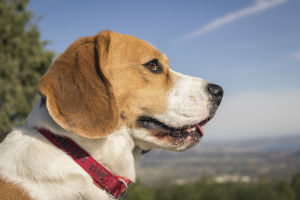To Jump Or Not To Jump, It's All In The Training
- Posted on
- By Lindsay Farris
- Posted in dog behavior, dog jumping, einstein dog training, jumping, stop jumping, training
- 0

Jumping on people is never a welcome behavior in our dogs. Not only is being jumped on a nuisance but it can also potentially cause scratching or bruising in the humans they love. These tips will help you encourage positive new behaviors in both your pet and yourself as their pet parent.
Tossing a frisbee as your dog dives for it or jumping into a warm lake with our buddy are great ways to pass a summer day. However, whether due to excitement or boredom, jumping on people is never a welcome behavior in our dogs. Not only is being jumped on a nuisance but it can also potentially cause scratching or bruising in the humans they love. These tips will help you encourage positive new behaviors in both your pet and yourself as their pet parent.
JUMPING TIPS
- Make sure your dog has adequate exposure to both environmental and social stimuli.
- Over-excitement in situations can cause explosive behaviors if they are only displaying the behavior when company is over or in a new place.
- Dogs often jump because we are inadvertently encouraging the behavior from a young age.
- Puppy/dog jumps, we pet and they view this as a reward. Over time this becomes a learned behavior of attention seeking or greeting.
If your dog has a 'place' command it is always recommended to have them hold place during people entering until they have settled down enough as our first line of defence against jumping. Your dogs place command should be solid enough that people can greet the dog without it breaking the command otherwise you may need to back tie them until this behavior becomes more solid.
If there is no 'place' command or you are out in public:
- Have your dog on a leash if you know company is coming over. You can also hang a sign on the door for unexpected drop-in visitors letting them know it may take a moment to get to the door because you have a doggy in training.
- Have your dog or puppy on a leash in a sit or down.
- Step on the leash so they only have enough slack to be able to sit up so that the front feet can't come off the ground.
- Inform guests and family that the dog is not to be pet until they are maintaining a sit/down and to come in CALMLY to pet the dog. When we start jumping around and getting excited the dog also becomes excited making it harder to control.
Keep the dog on a leash or on 'place' until the initial excitement of company has passed. If the dog becomes overly excited again once you release them be sure to regain control by redirecting to place or reattaching the leash for a while and trying again a little later.
If we add in a correction without trying to correct the source of the issue we often don't see full resolution like any behavior. This is why exposure is important to the process. Consistency among all people in the household is also essential for success. Be patient and don't give up!


Comments
Be the first to comment...